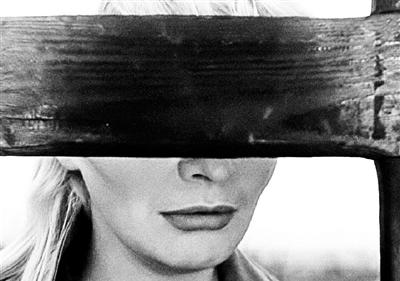
◎ Lonely Island Lord
In the Polish Masters Exhibition held by the Shanghai Art Film Union, there are two films directed by Yelzi Kavalerovich, namely "Night Train" in 1959 and "Sister Joanna" in 1961. These two films, shot at the height of the "Polish School" of cinema, have a very obvious process of constructing so-called "typical scenes", but ultimately deconstruct this process through the film text itself. Judging from the expression of the play, "Sister Joanna" uses the observation of group portraits in the 17th-century Polish monasteries that have a "human performance" meaning, and implicitly speaks to reality, which is obviously a concentrated expression of hiding the sharp edge in the common scene. In contrast, although "Night Train" is also a flower offering to the Buddha, the symbolic externalization of the character is more specific, and the means of expression are closer to the mainstream genre, but under the suspense surface, there is a more intuitive and more egregious desire to complain silently.
Every time I watch "Night Train", it reminds me of Hitchcock's famous British closed space suspense masterpiece "The Missing Lady", which also bases the main scene on a moving train, but "Night Train" shifts the focus of contradictions from the spy sea doubts in World War II to the post-war Polish life. The doctor Jersey and the young girl Marta, who meet in the same sleeping car, go through a complete process of suspicion and doubt because Jersey is implied to be a potential wife killer, in this process, the cold and silent Jersey gradually shows a warm side, Marta is also angry with him, and decides to get rid of the (ex)boyfriend waiting in the back car, but the ending is reversed, and it turns out that this love is not what she thought.
The audience doesn't understand Marta's sadness until almost the end of the film, and the doctor says to her lightly, "My wife is waiting for me at the platform." "There is no melodrama-style mountain call tsunami, and this emotion is calmly snuffed out. For most of the film, the various people on the train are jealous about who is the murderer who is mixed up in the car, and in the seemingly very delayed atmosphere of Hitchcock, there are many specious tastes of life: the woman with a thin face and a relationship with her husband who never shows up; the man who has suffered from insomnia for a long time, but calmly falls asleep after the night of the murder; the conductor and female passengers who are silent in the crowded space of another carriage; and even the train attendants who are easily greeting the Ccp's suffering... In these idle strokes that seem to have nothing to do with the main plot, jersey and Marta's emotional progression, gradually surrounded by the slow and noisy crowd, their lives unfolding independently and just meeting in the moving train, do not produce obvious fierce collisions in the superficial sense, but on the contrary, they are tacitly implemented in their respective eyes to look at the people around them. Who is the murderer? What happened to the man and woman in the room? Why is it that whenever there is a stop, a man runs from the back compartment to the sleeper window? All the characters are watching people and being watched, and together they form a group portrait on the screen, which is repeatedly looked at by the spectators in the audience.
If the film only creates the suspense of the life flow in the confined space, it is obviously not able to break through the genre of simply establishing entertainment effects. In fact, the reason why Marta's sad moment was so moving was because the collective pursuit of the murder that suddenly broke out after the flow of the hearts of the people on the train suddenly made the historical coordinates of the "Poles" group in the ascendant of the Cold War suddenly clear. In the process of stopping and chasing, the crowd breaks into a cemetery, and after completing the pursuit, one of the passengers is straightened out by the knocked-down cross, and the scene also shows the character touching the tombstone with his hand and slowly walking towards the back cross.
Poland in World War II was divided up miserably, and poles not only suffered from the war, but also suffered from long-distance migration, and developed into a concentric pursuit at various stages of their hearts, and these strangers unconsciously completed a "small reunion". In the process, the cemetery, where the owner does not know where he belongs, seems to have been choreographed by the director into a place where the characters collectively look back at the disaster, and with a "reconstruction" mentality of the highly symbolic Catholic faith, the people escort the prisoners back to the train. Throughout this hunting scene, there is neither inflammatory music nor effort to establish a complex chase and escape schedule, on the contrary, it is full of the sound of country dogs and birds and a solemn solemn atmosphere.
This is a chorus of sad people caught between history and reality, and Marta's few falls are just one of them. Through "Night Train", Kavalerovich hides the relief of memory, religion and emotion, and compared with the collective performance of the characters in "Sister Joanna" that was finally implemented in the WTO entry link, "Night Train" breaks through the window paper of interpersonal hypocrisy and pours out the determination and difficulty of "starting over". This may also be a reflection of the situation of the "Polish School" itself.